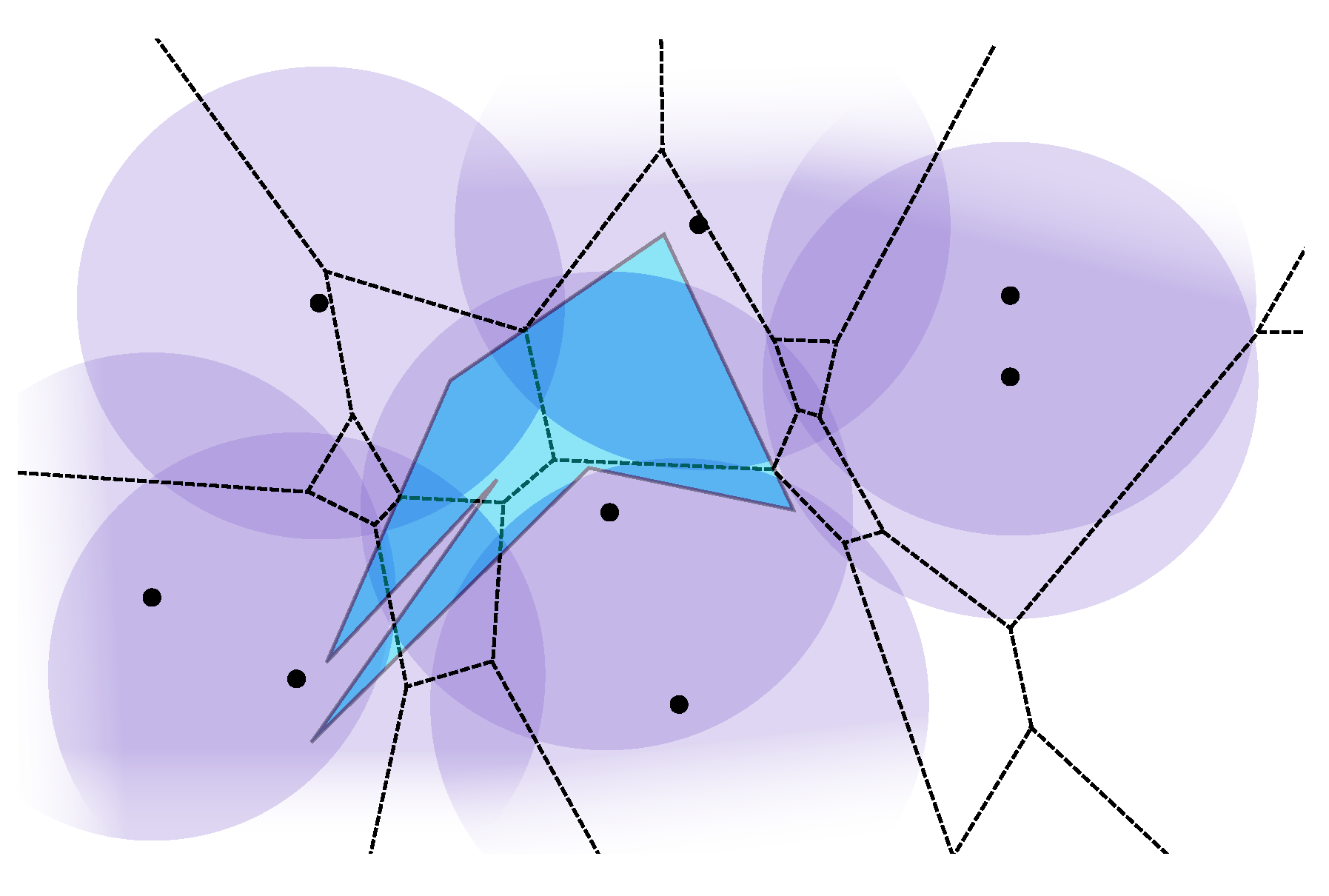计算几何 W35 Introduction to Algorithm Engineering
课程简介
计算几何:理论和实验,aka Computational Geometry: Theory and Experimentation
Week 35 - Week 49,共 14 周(除去秋假一周)
每周都有阅读材料,简单记录一下课前阅读笔记。
第一周(Week 35)内容:Introduction to Algorithm Engineering
阅读材料
Sanders
title: Algorithm Engineering – An Attempt at a Definition
by Peter Sanders (Universität Karlsruhe)
Algorithm engineering: cycle of design, analysis, implementation, experimental evaluation.
algorithm engineering = experimental algorithmics??? too limited
design: not just care about asymptotic worst efficiency, but also have to look at the constant factors.
analysis: gap between theory and practice.
algorithm libraries: portable, easy to use
NotToDo
title: How Not To Do It
by Ian P. Gent (University of Edinburgh), Toby Walsh (INRIA-Lorraine)
Getting Started
Don’t trust yourself: bugged code may give better performance than the correct one
Do make it fast enough: as fast as possible
Experimental Design
- Do collect all data possible: every branches, every procedures should be taken into consider
- Do it all again: reproducibility
- Do it often and do it big: perform lots of experiments on large problems
- Do be stupid: stupid experiments give fascinating results.
Analysis of Data
- Do loot at the raw data
- Do look for good views: finding a good view of data
- Don’t reject the obvious
Presentation of Results
- Do present statistics: give min, mean, max, median, standard deviation
- Do report negative results: as valuable as reporting positive results
- Don’t push deadlines:
Hooker
title: Testing Heuristics: We Have It All Wrong
by J. N. Hooker (Carnegie Mellon University)
The evils of competitive testing
- makeing the competition fair: machines’ differences, coding skills
- choice of test problems: benchmark problem
A more scientific alternative
- branching rule
what to measure: things predicted by the model
How Branch Mispredictions Affect Quicksort
by Kanela Kaligosi (Max Planck Institut für Informatik) and Peter Sanders (Universität Karlsruhe)
Quicksort
- random pivot, median-of-three, α-skewed pivot
Branch Prediction Schemes
static branch prediction
α-skewed pivot selection, not take dynamic behavior of program
dynamic branch prediction
- 1-bit predictor: look the last time
- 2-bit predictor: look back twice
- k-bit predictor: look back k times
conclusion
- median-of-3 pivot selection bring no significant benefits in practice: increase of branch mispreddictions
Tradeoffs Between Branch Mispredictions and Comparisons for Sorting Algorithms
Gerth Stølting Brodal and Gabriel Moruz (Aarhus Universitet Datalogi)
optimal comparison based sorting algorithm: Θ(n log n)
一大堆公式看着都烦,不想看了
Skewed Binary Search Trees
Gerth Stølting Brodal and Gabriel Moruz (Aarhus Universitet Datalogi)
skewed BST: a constant , s. t. for each node v there is a fixed ratio between the num of nodes in the subtree rooted in the left child and the subtrees rooted at v.
又是一大段公式证明,看不懂
hardware discussion
又在讨论体系结构的东西
branch misprediction
memory layouts
课堂笔记
Intro to AE
算法工程简介
20世纪四五十年代发明的几种排序算法
复习一下渐进时间复杂度 O Θ Ω
快速排序时间复杂度最差情况下是 O(n^2)
实际操作中又是还需要关注常数是否过于离谱
Quick Histroy & BG
硬件的发展:缓存和存储层次、分支预测、多核、GPU、分布式云计算等等
暴力算法耗时,但是好实现
the gap between theory and practice!
Overview of AE
- 对算法进行详细研究
- 测试&执行
- 分离并控制有影响的参数
- 建模
- 统计分析
- bridge the gap between theory and practice
涉及的层次
- 系统结构
- 算法和数据结构
- 高级语言的微调 tuning
- 低级语言的微调
- 系统软件
- 平台和硬件
What’s not AE
algorithmic horse race(田忌赛马式的对比)
建立最快的算法
实现一些算法并看谁最快
而是要关注
- best practices
- 理解模型、假设、评估、解释结果、形成理论
Models of computation
理论假设的 RAM
- 所有的内存都是寄存器
- 基础的 CPU 操作被认为是 O(1) 的
- 寄存器简单的读写被认为是 O(1) 的
计算几何中的 RAM
- 理论上认为存储器存的实数
- 所有的简单运算(加减乘除开 k 次方根)被认为是 O(1) 的
- 好处:理论简单化,易于设计分析算法
- 坏处:不显示,disparity between theory and practice
In reality
寄存器、一级缓存、二级缓存、RAM、固态硬盘、机械硬盘
越往后需要的时钟周期越多,相邻两级存储相差数十到数千倍不等
机械硬盘非常慢,访存延迟特别高(盘片旋转+寻道时间)
IO Model
假设 B 大小存储块中有 N 个数字
问题一:找最大值
Max 设为负无穷,从左到右挨着扫一遍,更新 Max 即可。I/O Compexity: O(n)
问题二:快速排序中找到一个枢纽值 P 进行左右 交换 (Partition) 操作
如果存储大小 ≥ 2*B,也是 n 次块内读,n 次块内写 I/O Compexity: O(n)
问题三:快速排序
快排的 IO 复杂度:
堆排的 IO 复杂度:
On Experiments
what to measure?
CPU time sometimes could be misleading: machine dependent, OS and other factors
Cycles, clock time
cache misses, I/O, etc.
counters
Modeling performance and other metrics
检查 running time
- O(log n) 当 n 加倍时,运行时间增加一个常数
- O(n) 当 n 加倍时,运行时间加倍
- O(n^2) 当 n 加倍时,运行时间加四倍
- O(n log n) 除去 n,当成 log n 检查
- O(sqrt(n)) 当 n 加四倍时,运行时间加倍
注意在数据规模较小时,常数的影响 dominates!



